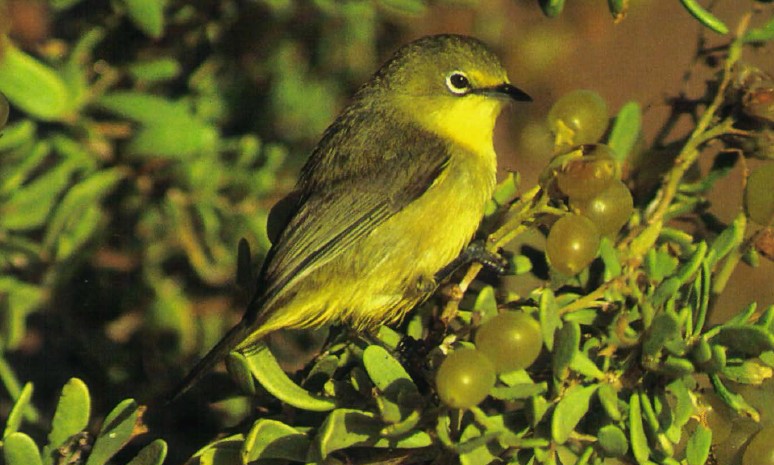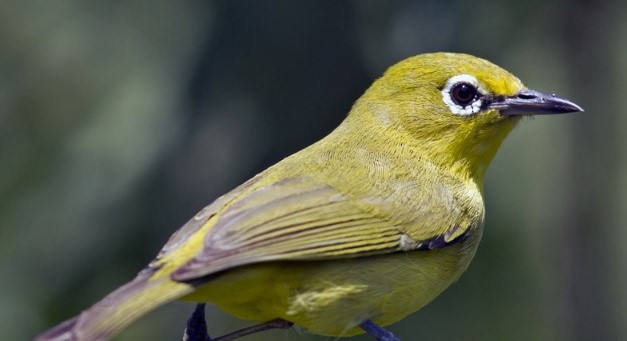The yellow white-eye (Zosterops lutea) is endemic to the mangrove forests of subtropical and tropical northern Australia. These species are known for the circle of white feathers surrounding their eye, which also goes by the name yellow white-eye.
There is no difference between the sexes. The upper parts of the bird are plain citrine-green; the wings and failing are darker. The eye ring is white, and the lores are black. The underparts of the bird are lemon-yellow. There is a brown color to the eyes. Dusky slate is the color of the bill. There is lead in the feet. In the mature stage, they are duller than adults.
Yellow silvereye, canary white-eye, and Gulliver’s white-eye are other names for the bird. Birds measure about 95–110 mm in length. Yellow-white-eye calls with a single, mewing whistle in contact. There are trills and warbled whistles in the song of Yellow White Eye.

It is during October and March that birds nest and breed. Among the outer leaves of mangrove trees, nests are made of fine grass or thin bark shreds and cobwebs, lined with finer material, and hung from low horizontal twigs.
In addition to laying three or four eggs, the yellow-white-eye lays eggs that are pale blue or green-blue in color. About 17 x 13 mm in size, the eggs are oval to tapered oval shapes. Both sexes are involved in incubation.
There are yellow-white-eyes in mangroves and adjacent shrublands from Shark Bay, Western Australia, to Weipa, Cape York Peninsula, as well as near Ayr, Queensland. Two races exist.
Easily recognized by their uniformly yellow toning, yellow white-eyes are birds of mangroves around northern Australian coasts. In Western Australia, they often wander inland along riverine galleries of paper-bark and eucalypt trees, as well as acacia scrubs, but they still nest in mangroves.
A yellow-white-eye moves nomadically through mangrove thickets at one to ten meters above the mud in groups of five to thirty or even more after breeding. They glean for food rapidly, hopping about and hanging upside down to pick items from leaves and twigs, then darting to the next patch of shrubbery in short swooping movements.
In a low chorus of sounds, each bird answers the other with soft whistled chirps. The main food source is insects, such as beetles, bugs, and ants, but small fruits and nectar from flowers are also taken as opportunities arise. Apparently, pairs leave groups to breed independently. They sing a lot from sheltered branches near the nest, both sub-songs and the full sibilant songs characteristic of white-eye.
Read More: Ashy-bellied white-eye (Zosterops citrinella)







